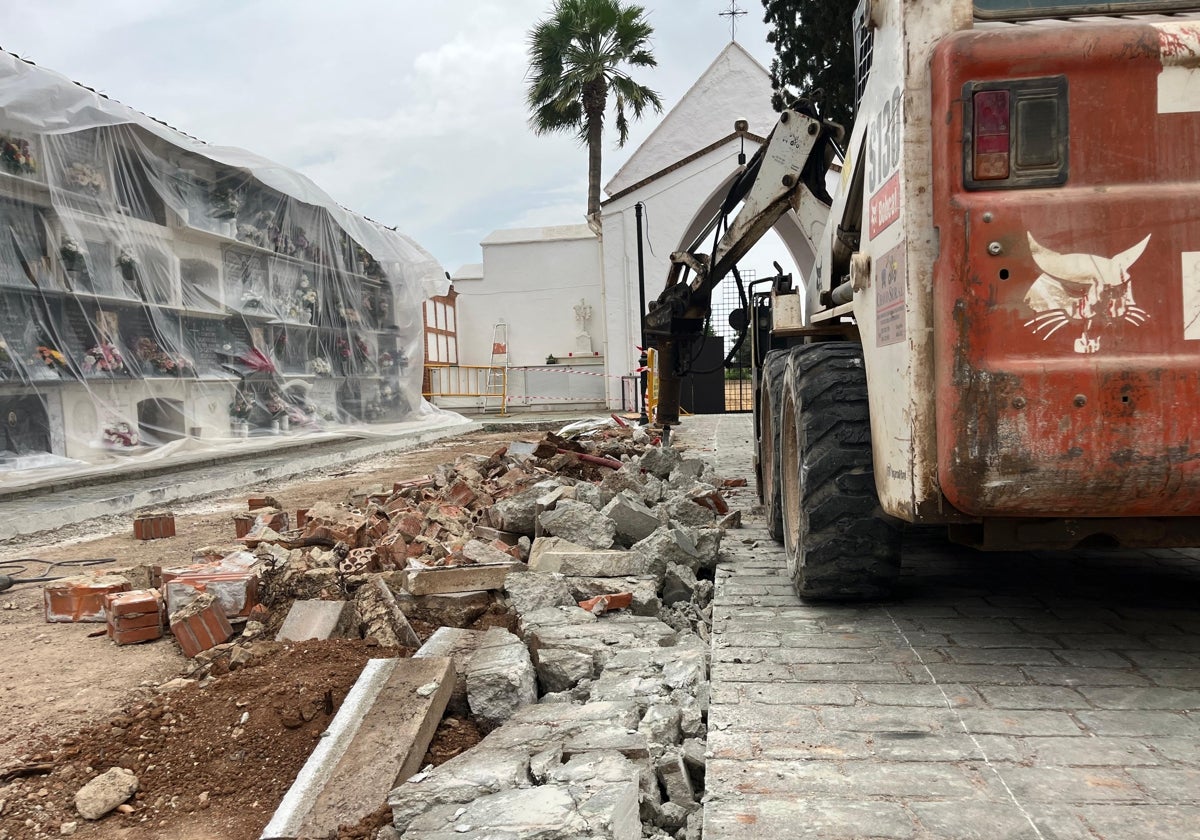Exhumation work begins at one of the mass graves found in north of Malaga province town
Although work on the site officially started this week, a commemorative ceremony was held in the municipal cemetery on Saturday 14 June, coinciding with the Day of Historical and Democratic Memory
On 28 June last year a historic discovery was made in the town of Campillos in the north of Malaga province: two mass graves were located inside the municipal cemetery of this town belonging to the Guadalteba area . The road since then has been long and full of ups and downs but, since Monday 16 June 2025, almost a year after the discovery, the first part of the work to exhume these victims of war has begun. It is estimated that this initial phase will last about three months, concluding at the end of September or possibly early October.
This activity corresponds to the first phase of the overall project and will focus on the exhumation of the first of the two mass graves located. An agreement has already been announced to extend the project for a further year, which will allow work to be carried out on the second mass grave in 2026. The estimated budget for this first intervention amounts to 30,000 euros.
Since Monday morning, the team of researchers who located the graves have begun the initial excavation, under the direction and supervision of the University of Malaga (UMA) history professors coordinating the project, Dr María José Berlanga and Dr Encarnación Barranquero.
As previously reported by SUR and SUR in English recently, this work will be done with the help of students from the UMA. Around 50 students from the bachelor's degree in History and the master's in Historical and Literary Heritage of Antiquity are expected to take part this summer. For them, it is an opportunity to gain practical experience in forensic archaeology, documentation techniques and archaeological research on a real, live dig as part of their academic training.
However, as SUR has learned from sources close to the project, the university students will not join the excavation work during these first few days. At the moment some heavy earth removal needs to be done before they can begin the actual excavation phase, so the first students are expected to arrive in Campillos on Monday 23 June.
Commemorative event
Although work on the site officially began on Monday this week, a commemorative ceremony was held in the municipal cemetery on Saturday 14 June, coinciding with the Day of Historical and Democratic Memory (concerning Franco's dictatorship).
The ceremony was attended by representatives from Campillos town hall and numerous relatives of the victims executed there during the Civil War, symbolically marking the start of the excavation work that is expected to recover the remains of around 100 people.
During the ceremony, several family members took part in a symbolic digging of the earth, representing the start of this exhumation work. Afterwards, council representatives laid a wreath in memory of the victims. The wreath, which still remains on site, is inscribed with the message: "From the people of Campillos in memory of the victims."
Dr María José Berlanga, lecturer in the UMA's department of Historical Sciences and one of those responsible for the project, wanted to stress the fundamental role of the relatives in this process and encouraged them to continue collaborating: "Any knowledge, information or memory they can give us will be very valuable. Your contribution will be key to making the reconstruction of this moment in the history of Campillos as complete as possible."

